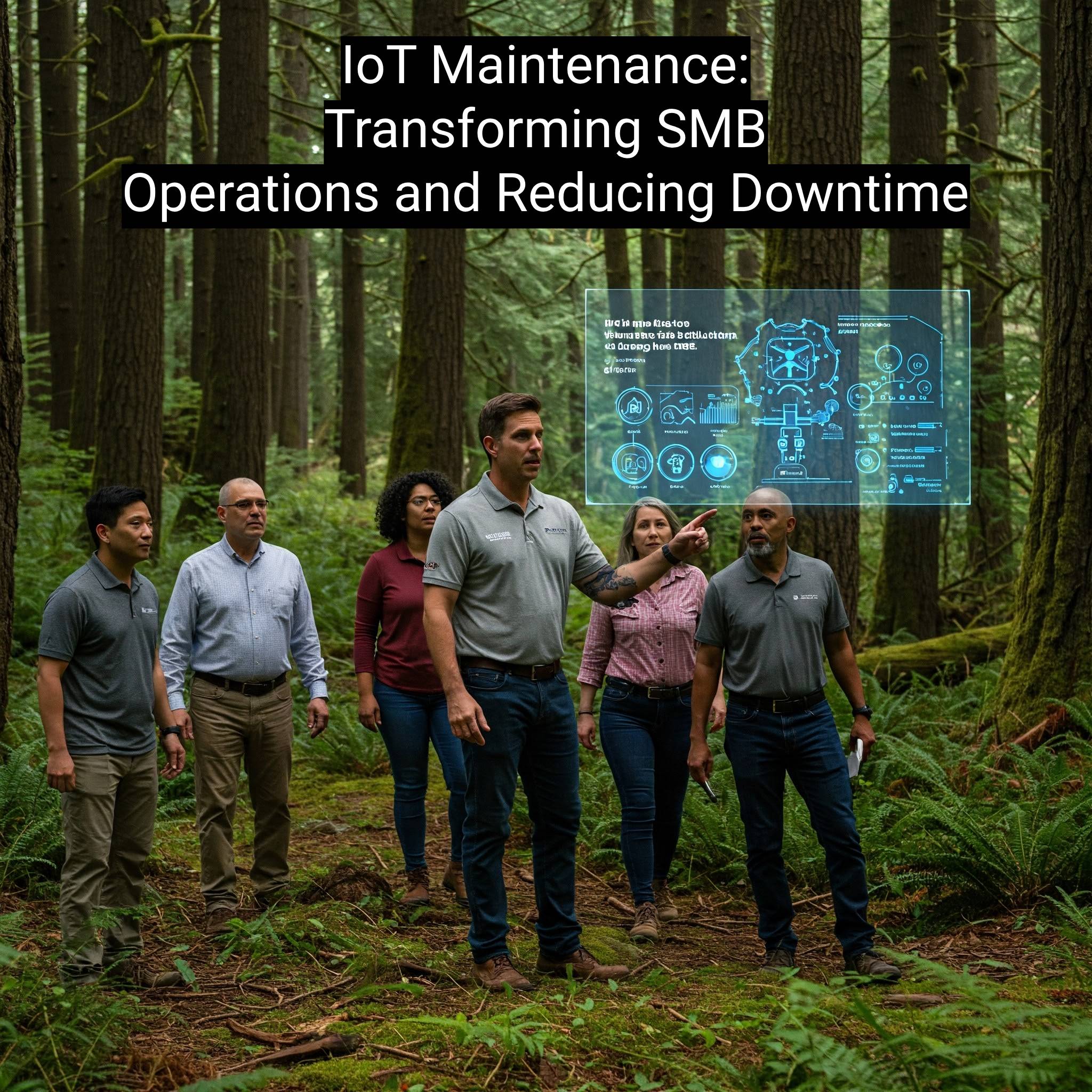IoT Maintenance: Transforming SMB Operations & Reducing Downtime
In the world of small and mid-sized Businesses (SMBs), every minute of downtime translates to lost revenue and frustrated customers. Traditionally, maintenance has been a reactive game—fix it when it breaks. But what if you could foresee equipment failures before they happen? Enter the Internet of Things (IoT), a game-changer that’s transforming maintenance from a costly gamble to a precise, data-driven strategy. Imagine a system where sensors anticipate breakdowns, inventory reorders itself, and field crews arrive with the exact tools needed. This isn’t science fiction; it’s the reality of IoT-powered maintenance.
The Shift: From Break-Fix to Predict and Prevent
For years, the ‘if it ain’t broke, don’t fix it’ mentality prevailed. But this approach is akin to driving blindfolded. IoT flips the script. By deploying sensors to monitor critical assets, we gather real-time data on everything from temperature and vibration to performance metrics. This data, analyzed with machine learning, allows us to predict failures with remarkable accuracy. According to a report by MarketsandMarkets, the predictive maintenance market, driven significantly by IoT, is projected to grow from $6.9 billion in 2019 to $30.9 billion by 2025. This growth underscores the increasing recognition of IoT’s value in reducing downtime and optimizing asset lifespan. Think of it as a weather forecast for your machinery—knowing when a storm is coming lets you take preventative action. This is not just about avoiding breakdowns; it’s about optimizing asset lifespan and minimizing operational disruptions.
Condition-Based Maintenance: Precision at its Finest
Condition-based maintenance, enabled by IoT, takes preventative measures to a new level. Sensors continuously track asset health, relaying data to a central database. When anomalies arise, indicating potential degradation, alerts are triggered. A study by Deloitte indicates that condition-based maintenance can lead to a 10-40% reduction in maintenance costs and a 25-30% reduction in breakdowns. This allows for proactive parts ordering and efficient repairs, often in a single service visit. This precision saves time, reduces costs, and ensures that maintenance is performed only when truly needed. In my experiences, this shift alone, has saved companies countless hours of unneeded work.
Optimizing Inventory and Field Operations
IoT isn’t just about predicting failures; it’s about streamlining the entire maintenance ecosystem. Connected stockrooms, for example, use sensors to track inventory levels, automating reorders and preventing costly shortages. A report by McKinsey highlights that IoT-enabled inventory management can reduce inventory holding costs by 20-50%. Field crews benefit from real-time asset health data, enabling them to arrive on-site with the right tools and expertise. This 360-degree view of asset health reduces response times and maintenance durations, improving overall efficiency. This type of efficiency is a staple of the M2square Hybrid Business Operating System (HBOS), and it’s a standard that every SMB should strive for.
Safety and Compliance: A Proactive Approach
Beyond efficiency, IoT enhances safety and compliance. By continuously monitoring conditions, potential hazards can be identified and addressed before they lead to accidents. Analyzing data over time helps maintain regulatory compliance and ensures a safer working environment. According to OSHA, proactive hazard identification and mitigation, enabled by IoT, can significantly reduce workplace injuries and related costs. This proactive stance is crucial for safeguarding both employees and assets.
New Revenue Streams and Data-Driven Improvement
For those with high-value assets, IoT opens new revenue streams through ‘selling uptime.’ Offering monitoring and maintenance services based on real-time data can transform maintenance from a cost center to a profit center. Moreover, the data collected provides invaluable insights for future product improvements, allowing manufacturers to refine designs and enhance performance. As Gartner predicts, by 2025, 80% of organizations implementing IoT will have some form of revenue stream enabled by it. This shows that this technology isn’t just about cutting costs, but also creating new value.
This is not just about adopting new technology; it’s about embracing a smarter, more efficient way of doing business. By leveraging IoT for maintenance, SMBs can reduce costs, minimize downtime, and enhance overall operational efficiency. The market projections and industry reports highlight the substantial impact that IoT is having on maintenance practices. It’s a testament to the power of data-driven decision-making and a glimpse into the future of maintenance.
Ready to transform your companies productivity with Data Analytics and the right processes? Schedule a free consultation with m2Square today to discover how our process can be tailored to your specific needs. Let us help you integrate the right tools and strategies for maximum efficiency.
Unlock Your Business Potential
Curious how m2square Consulting can help optimize operations or navigate digital transformation? Schedule a free, no-obligation 30-minute call to explore tailored strategies for your SMB.

